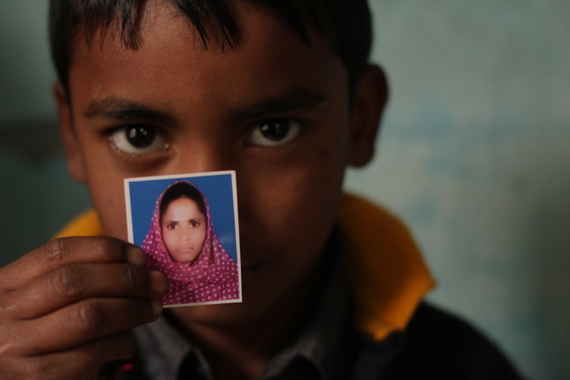
Three years ago this week the Rana Plaza building in Dhaka, Bangladesh, came crashing down in what remains the worst industrial accident in the global garment industry. Over 1,134 people were killed and thousands more left seriously injured. Heartbreaking images of limbs, dust, rubble and tangled reams of brightly coloured fabrics made headlines worldwide, the ruined remains of the lives of thousands of Bangladeshi garment workers.
Rana Plaza exposed the grim realities of the global fashion industry in all their horrific glory: the poverty pay that meant garment workers, the vast majority of them young women, were unable to say no to entering a cracked and dangerous building on 24th April 2013 for fear of losing essential wages; the exploitation at the core of an industry worth almost $3 trillion annually; and the near total lack of transparency that meant our colleagues spent days, weeks and months digging through rubble and dead bodies to find the labels of the clothes being made in Rana Plaza, simply so we could identify which brands were actually sourcing there.
In the wake of the disaster consumers reacted with horror and brands vowed to do better. With the media highlighting the sweatshop realities of fast fashion, change was promised.
But now, three years on, what has really changed in the global garment industry? UK high streets are still dominated by cheap clothes and ever-changing trends, with new stock hitting the shelves every few weeks. Clothes costing a few quid are still seen as disposable and consumption rates continue to rise.
Brands have got better at saying what consumers want to hear though - corporate social responsibility dominates brands discourse of 'ethical' clothing lines, however behind the PR spin are things any different on the factory floor?
Unfortunately the answer is no. Brands such as H&M, seen by many as leaders in ethical high street fashion with their 'conscious' range and 'world recycle week' which they launched this week, are still failing at guaranteeing the safety of their workers. Three years on from Rana Plaza and 55% of their Bangladeshi supplier factories still lack adequate fire exits. Workers sewing H&M clothes still risk their lives daily just doing their job.
In order to truly ensure an end to sweatshop labour conditions, it is essential that we hold brands accountable. That we demand that those who make their profits from the sweat, tears and blood of poor and uneducated women in countries such as Bangladesh, Cambodia and Myanmar, are held responsible for the conditions in which they work. That there is recourse to justice for workers who find themselves wronged and not simply reliance on voluntary initiatives and the blind hope that brands who worship profit margins will 'do the right thing'.
Trusting in brands ethics is a dangerous status quo, one where money rules and people come well below profit. Supply chains are complex and global, involving agents who source factories on behalf of brands, factories who subcontract out work when high orders and time pressures mean they can't complete alone, and homeworkers paid piece rate on a daily basis managed by middlemen. With such layered webs it becomes easy for brands to deny knowledge of workers when something goes wrong. It becomes the norm for brands to say that paying a living wage to their garment workers is something they'd like but it's difficult and one day they'll be able to, but not quite yet. And somehow, it has become accepted for us to continue consuming at an alarming rate, buying clothes we don't need and distancing ourselves from the reality of how they were made, how they can be sold so cheaply and who is paying the real cost.
Factory disasters such as Rana Plaza are not merely flukes of bad luck. Their devastation may mirror that of a natural disaster, but the body bags and broken lives are an entirely man-made consequence, the result of greed, cut corners and a chain of denial of responsibility.
Building collapses, devastating factory fires (such as Tazreen, in which over 117 people died, 2012, and Ali Enterprises, where 254 people were killed, 2012) and industrial accidents are not uncommon under the circumstances in which the global garment and shoe industries currently operate. The pressure to cut costs, the race to the bottom on price, is a vice squeezing everything between the brands profit targets and the final product, and garment workers bear the brunt of this pressure. It is these women who have to enter factories that are unsafe, broken buildings struggling under the weight of old machines, heavy generators and illegally constructed floors. They are the ones working 14-16 hour days, six days a week, to take home poverty wages that simply don't cover their basic living essentials.
Labour Behind the Label are still campaigning for factory safety as a basic necessity. We are still pushing for brands to commit to paying a living wage to all their workers. We are still demanding transparency and accountability in the global garment and shoe industries.
Please join us.
On this third anniversary let's remember those who were killed simply doing their job. Whose lives were seen as worth less than a cheap T-shirt. And let us be reminded of all those who remain: the millions of garment workers worldwide, the women who continue to feed the insatiable demands of the global fashion industry whilst fighting for their human rights.
Photo credit: Rainbow Collective